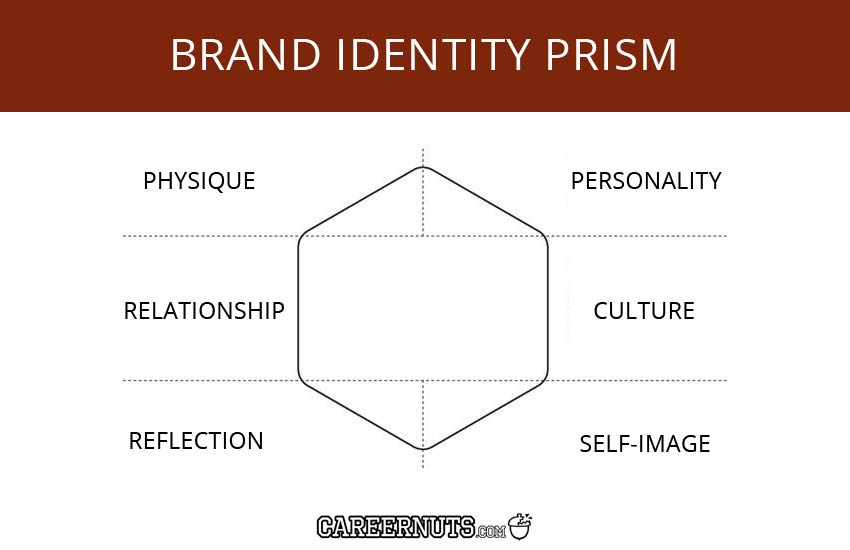What is a brand strategy & why do you need it? Here’s a COMPLETE guide on how to do branding for startups by branding & marketing expert Abhishek Sareen.

What is a brand? Well you can find thousands of definitions of ‘brand’ on the internet. Every individual has their own interpretation of what a good brand is. If you look up how to build a brand online, most people will use words like name, logo, symbol, tag line, color, values, reputation, etc. to define a brand. Well, this is how a brand communicates, but it’s not necessarily the brand itself.
Having been involved in the creation and development of a handful consumer brands and worked on many more, I would say that creating new a brand is a very difficult, task especially in a philosophical way. Almost everybody thinks they are an expert on how to build a brand strategy and this thinking leaves no opportunity to criticize a brand.

So I will not go through the challenges that I have faced during brand development, and talk about my learning through failures. Today I am writing a guide on how to do branding for startups and entrepreneurs that will help them define and evolve a brand’s vision and identity.

What is a Brand?
“A brand is the set of expectations, memories, stories, relationship, that, taken together, account for a consumer’s decision to choose one product over another,” this is perhaps one of the best definitions of a brand I have come across by Seth Godin.

This definition may sound simple and generic but has a much deeper meaning. You will only be able to gain an understanding of this meaning during the process of actually creating a brand for yourself. Note that this definition does not include words like brand name, logo, colors, etc. but talks about values and beliefs that are not tangible.
What is Branding and How it Fits into Marketing?
Before learning how to do branding, let’s first try to understand what branding really means.
Branding is the process of defining the personality, values and philosophy of a brand, which helps build trust in the minds of its consumers and customers. The branding activities help set direction for marketing activities like product, price, place and promotion. Branding is a continuous job of creating and strengthening the foundation and vision of a brand so that it can stay relevant for maximum possible time and survive crisis and black swan situations in times to come.

When Does Branding Begin?
When an entrepreneur starts a business or brand, he or she has a vision for it and how they intend to deliver value to their customers. Most of the times, this vision for a brand doesn’t get articulated well in the beginning, but it evolves as the business strategy and focus become clearer in the minds of the leader.
Branding is the process of articulating the vision and values of the founders that have helped them communicate to their customer over the years. You will find some of the most trusted brands in the world are often the name of the founder itself.

A startup needs have some level of clarity before it starts its business. Most of the times, creating a brand identity is not considered a critical activity as operations and revenue are the main focus. However, startups that intend to grow at an exponential pace need to have clarity of thought about where they want to position themselves and where they shouldn’t be.
There’s a saying among brand managers that if everything is a priority then nothing is. It’s highly unlikely that a brand can lure customers of all segments. That’s why even if it seems impractical, the branding thought process should start in the very beginning.
Now that you have an understanding of what branding is and its importance, let’s go over the brand strategy basics for startups:
Step 1: Define Your Consumer Segment
Before we utter the word brand, a marketer or brand management professional needs to have the deepest possible understanding about their consumer and customer segment. When I say deep, I mean you need to have firsthand understanding by spending time with them.

You need to know their likes, interests, their influencers, age, human biology, psychology, political ideology, what they eat, what they listen to, where they live, what’s in their fridge, who do they hang out with, what do they aspire to become, what is their wallet share, what are their current indulgences, etc. I cannot emphasize enough here, basically you need to live their life. Until you have done extensive research about your customer segment firsthand, you will never do just justice to process of creating a brand.
Once you think you somewhat understand who the people in your core consumer segments are, you need to start documenting all the insights that you have gathered. Ideally, there should be multiple people who should do this consumer research and then brainstorm these insights. You should use all kinds of media available to describe your consumer segment, using visuals or graphics, phrases used by them, things they relate to, etc. This is exercise is generally very exhausting and can take days or weeks. However, this is the foundation for creating a brand.

Step 2: Sharpen Your Target Consumer Focus
So once you believe you have spent sufficient time defining your ideal target consumers or segments, it’s time to prioritize and narrow down who you would cater to. Most companies and start-ups ideally want their brand to cater to everyone, but this is rarely true. A brand needs to have a very sharp focus, only then will it be able to communicate itself.

For example, a brand which caters to young boys in the age group of 20 to 25 in urban cities, is also going to resonate with boys aged 14 to 18 years as they look up to their elder brother. This brand fir 20-25 year olds may also resonate with adults 40 to 50 years as they would like to feel young and peppy again. This may not be true in all cases, but the point I’m trying to make here is that when you are trying to create a new brand, your focus segment needs to be narrow and extremely well-defined, so that your brand’s communication is sharp.
Consumer vs. Customer
Once we have defined our consumer segment, we need to understand whether the consumer for your product will actually be the person who makes the purchase. Your consumer is the person who uses your product, also known as the end-user, whereas the customer is the person who makes the transaction. For example, kids in the age group 3 to 5 years are the consumers/users of toys, and cannot identify a brand.

Hence the decision maker/customer is their parent. However, kids in the age group 5 to 14 years influence the decision making of their parents. So the brands need to consider these kids as their target segment. That’s why it’s extremely important to understand who the consumer and decision maker is.
Step 3: Create a Brand Identity
Once we are sure who our key target consumer is (they need not be your customer), and we have defined them well, you need to create your brand identity. Brand identity is the core thought and purpose of existence of a brand. It sets the direction and guides all marketing efforts towards achieving the vision set for the brand.
How to create a brand identity? You can use various tools like brand key (Ref Image 1), or brand identity prism (Refer image 2), etc. to define what your brand stands for, keeping your target customer in mind, and the extensive research you have done on them.


Now there are several tools that help you create your brand’s definition, and working this out should ideally be the responsibility of the brand leader. Creating a brand key or identity may seem like a collective exercise, but groups seldom come to a conclusion, as everybody may have a different understanding of the target customer. Finally, it’s the responsibility of the brand lead to close this and define the brand identity.
Step 4: Evolve your Brand Identity
Also, a brand identity should not be set in stone. The brand manager should look at it every two months, update it on the basis of their new learning and experiences, and make it sharper as time progresses. A brand also needs to change depending on changing environment and customer perception.
A brand identity needs to be continuously communicated to various teams across the organization, so that they can be the brand ambassadors and align with brand’s vision and consumers. In my personal opinion, a brand can be communicated at a deeper level only from person to person.

Now I’m sure you might be wondering what the real job is of this brand identity or brand key, which we have built after putting in so much effort. Simply put, a brand key/identity is the credo and guide of all marketing communication activities like brand logo, advertisements, promotion activities, etc. so that at any point of time, when the brand connects with its audience, it always communicates with the same beliefs and values, which help it establish its strong and distinct personality.
Step 5: Check Your Brand Perception vs. Reality
Now once the brand is out there, we finally get to the stage of communicating its values and personality to its customer. A brand manager needs to check whether the brand is really being perceived as it was intended to be or not. Now this is a highly self-critical exercise and many a time, we think highly of our brand, but our customer thinks otherwise.

Many people think that the brand’s image (logo, tagline, color etc.) needs to be static and should never change ever. However, my experiences in working with some of the top brands in the world of cycling taught me differently. A brand’s image does need to evolve, keeping the target customer in mind. I have seen some very popular brands changing their logos depending upon where they are being put. In fact, Google is one of the top examples of this, who keeps updating their logo on their homepage every other day, and even updates their app logo when necessary.
Step 6: Create Communication Guidelines
A guide on how to do branding won’t be complete without understanding how to communicate your brand values to the world. The world is an extremely noisy place, and in order for a brand to cut through the clutter, a brand needs to be bold, focused and extremely sharp in its message of communication. It has to prioritize its communication message to a singularity, otherwise it may not able to get any mind share in the intended customer’s mind.
The brand identity or brand key sets the direction for brand’s communication. So once you have sharpened your ideas, you can start creating a brand identity book. Here is the checklist of communication tools for startups. Some people also refer to these as the brand identity elements. However, these are just communication tools:
Brand Logo and Usage Guidelines across various Mediums
Name the different parts of your logo and create a guide for size, colors, positioning. The guide should contain rules for minimum size, logo on dark background, different combinations, and proportions and how to incorporate sub-brands. There should be meaning behind a logo or a background story which communicates the ethos or core of your brand identity. Its what’s behind the brand name and logo that interests the most to the consumer in order for them to trust and connect with a brand.

Brand Color Palette and Color Identity Guidelines, Font Types
Color is one of the most important elements of a brand. You need to select a color that communicates your brand’s personality and values. Color palettes can change as per the evolution of brand values, however they should stay at least for quite some time. Often a color helps identify the brand, like Tiffany’s blue, Facebook’s dark blue and Google’s multicolor. Read about color theory and what emotions and values associated with each color.

Select one accent color (red, blue, green, etc.) and one or two base colors (black, white or grey). Also select the exact shade (both CMYK for print and hex color code for web) and name your accent color. Select your main font and highlight font. Also select what family of fonts are acceptable (serif, sans-serif, cursive, etc.) Create a guide book that all your company’s HR, third-party design agencies or web-designers can use, which specifies which colors and fonts to use, and how.
Brand Taglines
Not all brands have taglines, and that’s because of how difficult it is to create one. A tagline helps communicate the brand’s core value in just a couple of words. However, if created well, it can effectively help a company create a brand identity. Famous examples include Nike’s “Just do it,” or Apple’s “Think different.”
Ideally, when creating a tagline, focus on your brand’s USP. What could be the tagline of your brand that just wouldn’t be the right fit for a tagline of your competitor? If your tagline is something that could just as well suit your competitor, then you haven’t created a good one. Also, it needs to evolve as your brand evolves, or at least be the guiding force for your brand values.
A Short Case Study
For example, the digital fashion magazine ShilpaAhuja.com started as a fashion blog, focusing on simple advice written as if it was coming from one’s best friend. So their first tagline was, “Your style BFF.” However, that soon became a clichéd phrase in the blogging industry, and no longer communicated the brand’s USP.
By then, the blog had evolved into a fashion magazine, whose expertise was using data analysis tools to do fashion forecasting. So their next tagline was, “The future of fashion is here.” However, this confused a lot of new readers, who thought it meant that ShilpaAhuja.com was also an e-commerce store, not a magazine.
So the team modified it to say, “Reporting the future of fashion,” which had a more journalistic feel to it, reflecting the magazine’s content standards. They also created monthly graphics featuring the month’s content that were designed to look like fashion magazine covers. The magazine’s traffic and earnings doubled within a year.
Communication Tone for Advertising and PR Copy
Think of every brand like a person. Now, the hairstyle, makeup, clothing, etc. are how the person communicates. This is what the colors, fonts, web-design, etc. do for a brand. However, more important than these are the actual texts that a brand uses in its communication, such as on the About page of your website, your product descriptions, customer-service, or communication over social media.
So first set a tone that should be used across all platforms, such as friendly, parental, factual or goofy, etc. You can also go further and define actual words or phrases that are not allowed in any communication, etc. It’s important to also define how the most common communications will be handled. A good example is Disney’s theme parks, where employees are always instructed to address child-guests as “prince” or “princess”, and always sit down when communicating when them, so they don’t feel “smaller”.
Photo, Video, Imagery Guidelines
A picture is worth a thousand words, so ensure that you have a detailed guide book for what kind of images should and should not be allowed. What should images on your website or social media portray? Reliance, confidence, fun, nurturing, or strength?

Packaging, Office Stationery Guidelines
It’s important to understand that your brand needs to sell itself not only to its end customer but also to your internal stake holders like you employees. Think of every small detail like high quality branded diaries, visiting cards, calendars, etc. They help you establish a connection with internal stakeholders and make them believe in your brand at a subconscious level.
A good company tries to maximize its branding efforts by branding anything that delivers value to your customer. This could be as simple as a delivery carton box or the scotch tape holding it together. Branding these non-essential but visible items properly lets your customer know that your company has an eye for detail for its product and services. A common saying in marketing and branding is that all that’s hidden should be designed. Apple is a great example of this philosophy. Amazon tries to follow the same rule.
Hope my guide on how to do branding gave you lots of business branding ideas. If you’d like to get this guide in the form of a branding for startups pdf, please leave your request below. Also leave your questions in the comments section below or tweet me @slubguy, and I’ll try my best to answer them.
Looking for more detailed steps? Read here: Branding Process Steps: How a Brand Takes up Mindspace
Read next:
Startup Marketing Basics: The SIMPLEST Guide for Entrepreneurs

Abhishek Sareen is a marketing professional with over 16 years of experience. He has extensive experience in international business and currently an independent consultant for steel tube, consumer goods and retail industry.
He is a passionate cyclist and participated in several endurance competitive events like MTB Himalaya. His interests are in behavioral psychology, economics and chess. He is a graduate in Computer Science and an MBA in Marketing. He completed his executive education from IIM-A in 2016 focusing on business strategy.
Wow, great advice.
that was good article